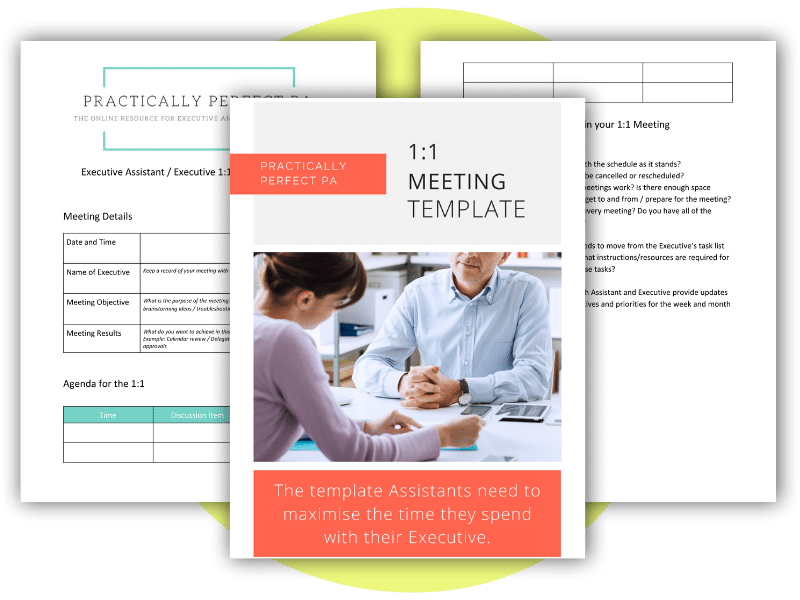Briefing Your Executive
Briefing example – The important meeting
Let’s look at a few scenarios where a strong brief will help your Executive hit the ground running and where you can add a whole load of value. Firstly, an important meeting your Executive is attending.
Scenario: Your Executive has a critical meeting with a potential partner that could significantly impact the company’s future.
Step One: Identify the key players
- Identify the crucial nodders whose approval or disapproval could sway the meeting’s outcome. Ensure your Executive knows who these people are and what their positions might be.
- Brief your Executive on who will support or challenge the company’s ideas. Provide insights into each attendee’s stance and potential questions they might ask.
Step Two: Know the meeting’s objectives
- Clearly outline the meeting’s goals. What is the primary purpose? What does success look like? Ensure your Executive understands the primary objectives and desired outcomes.
Step Three: Tailor the information
- If your Executive likes to challenge information, prepare solid data and think about the areas where they might want to pushback. If they prefer a more collaborative approach, provide them with discussion points and open questions that will help aid the discussion.
- Summarise the main points at the beginning of the brief and provide detailed information as needed. Use bullet points and highlight critical data so your Executive can scan the brief during the meeting if required.
Step Four: Plan for multiple outcomes
- Prepare your Executive for different outcomes. If the meeting trends positively, outline additional proposals to enhance the original pitch. If the conversation isn’t going as planned, have fallback options that still move the agenda forward.
Step Five: Provide comprehensive context
- Include background information on the potential partner, recent interactions, and any relevant historical context. This helps your Executive understand the whole picture and make informed decisions based on the meeting’s outcomes.
Other Examples: Trips, client meetings, and one-on-ones with direct reports
Here are a few more examples of activities where briefing your Executive is incredibly beneficial.
Before a trip
- Provide a detailed itinerary, including flight information, hotel reservations, and meeting schedules. Ensure your Executive has all the logistics down pat.
- Include information about the destination, such as key contacts, cultural norms, and any relevant local news.
- Prepare a briefing book with all necessary documents, background information on who they’ll be meeting, and key discussion points. Ensure they understand the context and purpose of each meeting during the trip.
Meeting with clients
- Provide a dossier on the client, including their business history, recent news, and any prior interactions with your company. Highlight their objectives and interests.
- Clearly outline the meeting’s goals and what your Executive should aim to achieve, even if they aren’t attending in person.
- Prepare talking points and potential questions to help guide the conversation and ensure all important topics are covered.
One-on-one meetings with direct reports
- Provide up-to-date performance data and any recent achievements or issues for each direct report.
- Set a clear agenda for the meeting, outlining the topics to be discussed. Ensure your Executive understands the main focus points.
- Include any feedback your Executive should give, as well as areas where they need input or updates from the direct report. Ensure your Executive is aware of ongoing projects and potential concerns.
By developing a comprehensive briefing process, you’ll ensure your Executive is prepared to make informed decisions even if you can’t be present. Remember, your role is crucial in shaping how effectively your leader can perform. For more on communicating confidently and effectively, check out the Confident Communicator Online Course.




